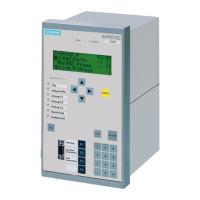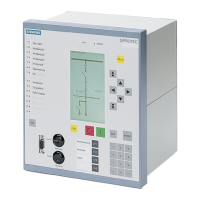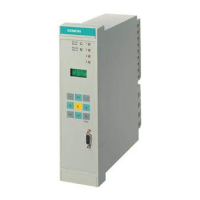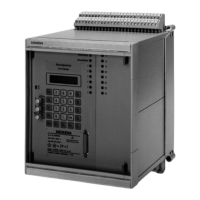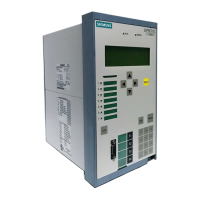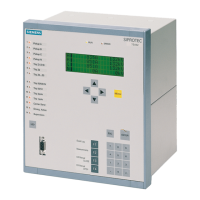2 Functions
68
7SD610 Manual
C53000-G1176-C145-4
The charge comparison protection function does not sum up the complex current
phasors at the ends of the protected object, but the integral of currents calculated ac-
cording to the following formula:
It includes the integration interval of t
1
to t
2
, which is selected in the 7SD610 device to
period
1
/
4
.
The calculated charge Q is a scalar value which is faster to determine and to transmit
than a complex phasor.
The charges of all ends of the protected object are added in the same way as done
with the current phasors of the differential protection. Thus the total of the charges is
available at all ends of the protected zone.
Right after a fault occurrence within the protected zone a charge difference emerges.
For high fault currents which can lead to saturation of current transformers, a decision
is taken before the saturation begins.
The charge difference of external faults is theoretically equal to zero at the beginning.
The charge comparison protection function immediately detects the external fault and
blocks its own function. If saturation begins in one or more current transformers which
limit the protected zone, the before-mentioned function remains blocked. Thus possi-
ble differences resulting from the saturation are excluded. Generally it is assumed that
an initial saturation of current transformers only takes place after the expiration of at
least one integration interval (
1
/
4
cycle) that commenced with the occurrence of a fault.
When the power line is switched on, the pickup value of the charge comparison is au-
tomatically redoubled for a period of approximately 1.5 s. This is to prevent from mal-
function caused by transient current in the CT secondary circuit due to remanence of
the CTs (e.g. during auto-reclosure). This current would simulate a charge value which
is not found in the primary quantities.
Each phase is subject to the charge comparison. Therefore an internal fault (sequen-
tial fault) in a different phase after the external fault occurred is detected immediately.
The functional limitation of the charge comparison is reached in the less probable case
that an internal fault (sequential fault) appears after the occurrence of an external fault
with considerable current transformer saturation in the same phase. This must be de-
tected by the current comparison stage in the differential protection.
Furthermore the charge comparison is influenced by charge currents from lines and
shunt currents from transformers (steady-state and transient) that also cause a charge
difference. Therefore the charge comparison is, as aforesaid, a function suited to com-
plete the differential protection ensuring a fast tripping for high-current short-circuits.
Blocking/inter-
blocking
The differential protection can be blocked via a binary input. The blocking at one end
of a protected object affects the other end via the communications link (interblocking).
If the overcurrent protection is configured as an emergency function, both devices will
automatically switch over to this emergency operation mode.
Please keep in mind that the differential protection is phase-selectively blocked at both
ends when a wire break is detected at one end of the protected object. The message
„Wire break“ appears only on the device in which the wire break has been detected.
The other device shows the phase-selective blocking of the differential protection by
displaying dashes instead of the differential and restraint current for the failed phase.
www . ElectricalPartManuals . com
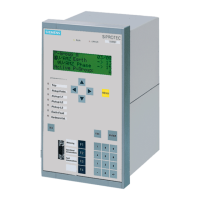
